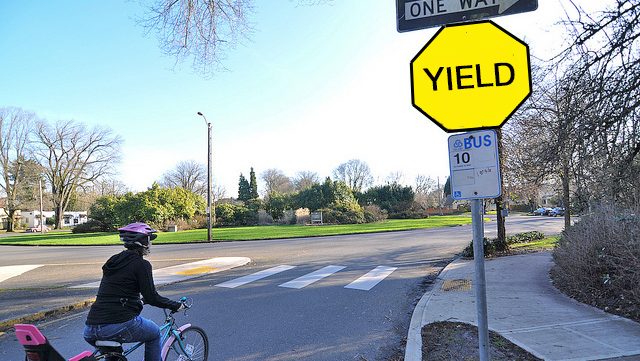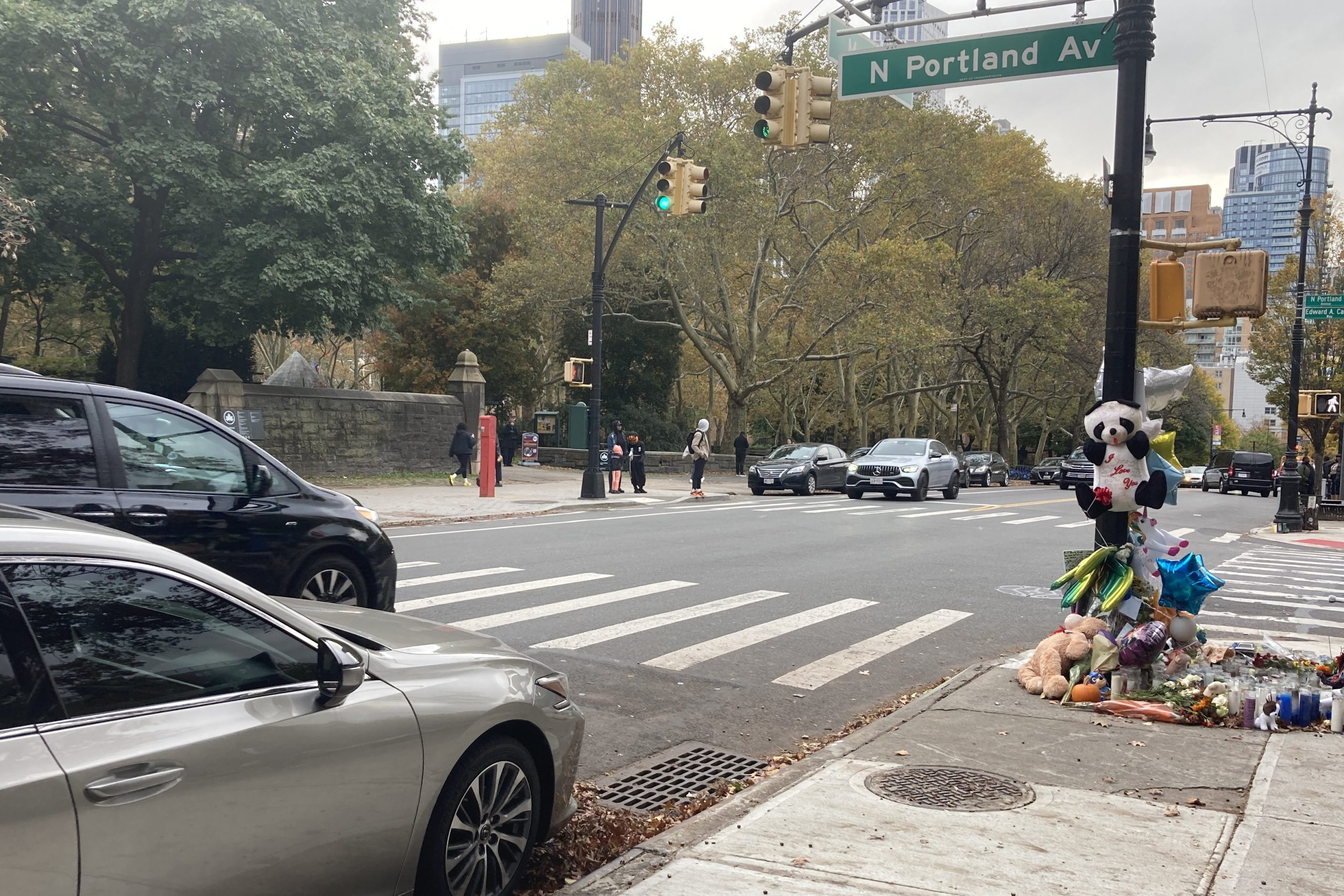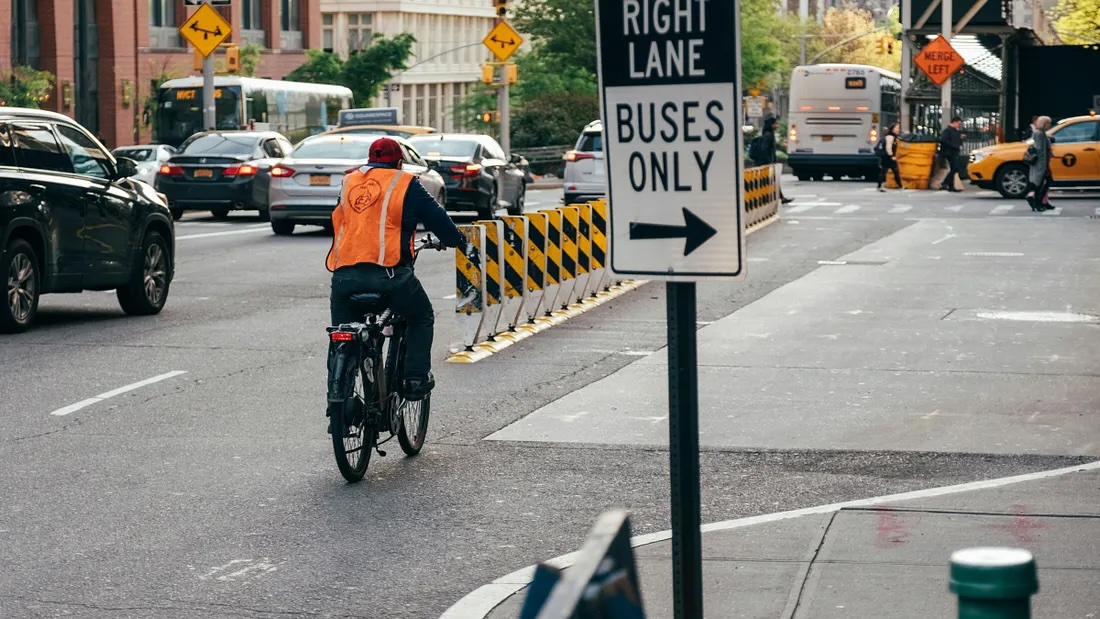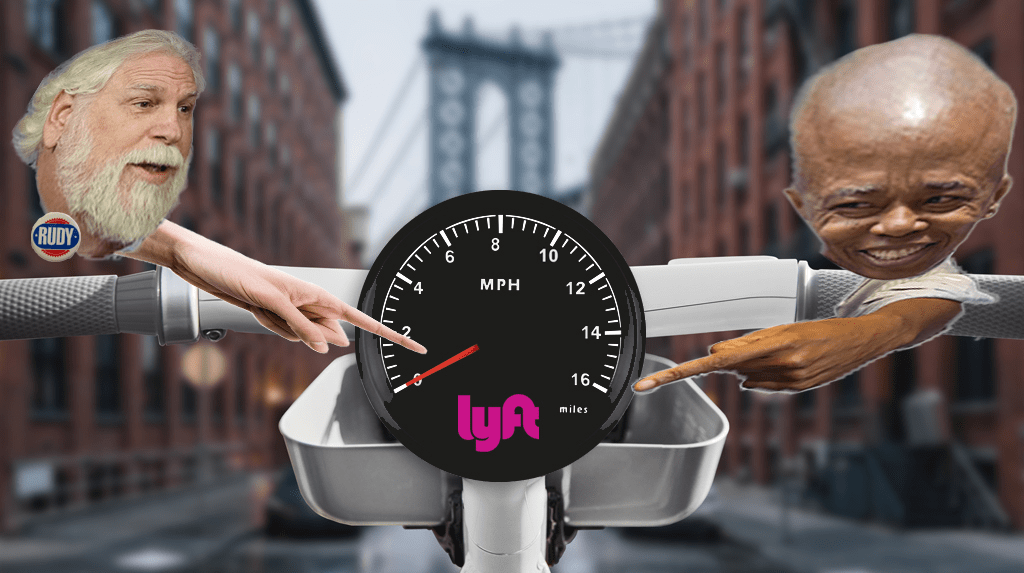A bill in the State Legislature known as Stop as Yield (“SAY”), or the “Idaho Stop,” would let cyclists treat red lights as stop signs, and stop signs as yields. The bill would reduce opportunities for overzealous enforcement, pretextual stops, and the stigmatization of behavior that eleven states have made legal and the National Highway Traffic Safety Administration has found safe.
SAY would make roads safer for cyclists, safer for pedestrians and, by spurring transition to sustainable modes of travel, better for the planet.
Reduce Disparate Enforcement
And since April, when the New York City Police Department (“NYPD”) started handing out criminal summons to bicyclists for routine traffic violations, the campaign to decriminalize otherwise safe cyclist behavior (“malum prohibitum”) gained added urgency.
New York City cyclists have long been singled out for enforcement—seven times as often as motorists. Black and brown cyclists in particular have been targeted. This disparity, combined with NYPD's new policy, increasingly exposes this cohort to the criminal justice system. It also risks green card holders’ resident status.
Enhance Bicyclist Safety
Experienced cyclists know that entering intersections before traffic starts moving enables them to safely establish visibility and “deconflict” with motorists—particularly trucks and SUVs whose drivers have limited visibility. Cyclists' motivation is backed up by data. Between 2004 and 2016, the city Department of Transportation found that 89 percent of the 3,395 NYC bicyclists killed or seriously injured (“KSI”) were struck by drivers at intersections.
SAY behavior is by no means unique to New York. Multiple studies find broad cyclist use of SAY, depending on the presence of cross traffic.
Passing SAY would get cyclists safely and legally out of truck drivers’ blind spots, past blocked bike lanes, and ahead of cars turning left — all major causes of cyclist KSI.


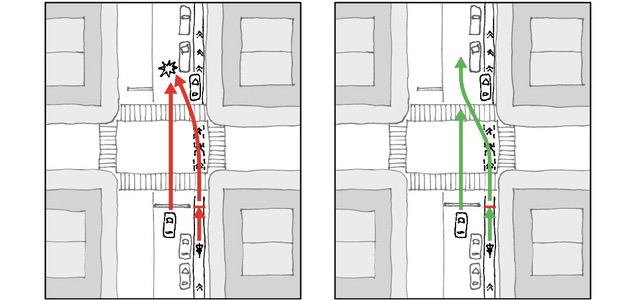
Allowing cyclists to yield at stop signs reduces fatigue, and their duration in the “conflict zone” where they’re apt to get hit — additional risk factors.

Enhance Pedestrian Safety
Arguing that “Stop as Yield” enhances pedestrian safety may seem counterintuitive and at odds with the perception that cyclists, in particular e-bike rider, contribute to a sense of chaos.
I won’t disagree. It seems like every day I curse someone on two wheels for coming too close, too fast, in the wrong place and from the wrong direction.
That said, to the extent SAY induces people to take up cycling, pedestrians will benefit. This is also backed up by data. U.S. cities with double digit bicycle mode share have 65 percent fewer pedestrian fatalities than their car-centric counterparts.
And we always have Paris, a city of 2.1 million, about the size and population of Manhattan, which explicitly prioritized pedestrian safety when they passed Stop as Yield in 2015:
“Cyclists must show prudence and respect in all circumstances—in particular pedestrians to whom they must always give way.”
Today, bike rush hour commutes comprise 18.9 percent of totalvs. 6.6% by car in the French capital.The country overall has two-thirds fewer pedestrian fatalities per capita than the U.S. And the improvement in Paris’ air quality has been stunning.
New York City actually implemented a version of SAY in 2019 when it allowed cyclists to enter intersections during the leading pedestrian interval (“LPI”).
Rather than encouraging cyclists to break the law as detractors claim, DOT observed that "the vast majority ... proceed on the LPI and no conflicts or near misses were observed."

Another reason SAY makes pedestrians safer is that it redirects enforcement away from cyclists slow-rolling through empty intersections and toward provisions of the state law that genuinely impact pedestrian safety (“malum in se”), such as failure to “respect pedestrian right-of-way in crosswalk” or to “maintain a speed not reasonable or prudent.”
As a cyclist and pedestrian, I'll take that deal.
Not a Silver Bullet
Will the SAY apply to e-bikes? Yes, absolutely. Like their “acoustic” brethren, e-bikes will be required to come to a full stop at red lights and wait for pedestrians and cross-traffic to clear before proceeding. At stop signs, e-bikes must reduce speed and be prepared to yield, and so on.
Will SAY really make cyclists pedestrians and cyclists safer? Yes. Conforming state law to how cyclists actually ride and keep themselves safe will help build a critical mass who follow the law. And making it safer and easier to bike will reduce vehicle miles traveled by automobiles—another key to reducing pedestrian and bicyclist injuries and deaths.
But SAY alone is not a silver bullet. Meaningful progress towards achieving Vision Zero will take a sustained, layered approach involving education, enforcement, regulation and infrastructure. Notably, NYC should (continue to):
- Daylight intersections and outfit traffic signals with LPI.
- Re-time traffic signals on avenues to 15 mph (“green wave”).
- If cyclists are legally able to yield at stop signs, designate a city-wide network of low-stress roads (“bicycle boulevards”).
- Establish a Taxi & Limousine Commission-style regulator for food delivery that holds apps accountable to prioritize pedestrian and worker safety over speed of delivery and limit restaurant catchment.
NYC is home to 760,000 active adult cyclists. It’s safe to presume that most engage in some form of SAY particularly in urban areas with a high density of intersections.
How many will be ticketed, or criminally summonsed, as enforcement is ratcheted up to address endemic non-compliance? What quantity of resources will be wasted?
Perhaps the worst aspect of clinging to this failed policy is that it forgoes the opportunity to reset the rules of the engagement in ways that prioritizes safety and respects the dignity of all road users.
For these reasons, and on behalf of 200 safe street advocates, cycling organizations and public officials, I urge legislators to pass Stop as Yield in the current session.
Click here to contact legislative leaders.
